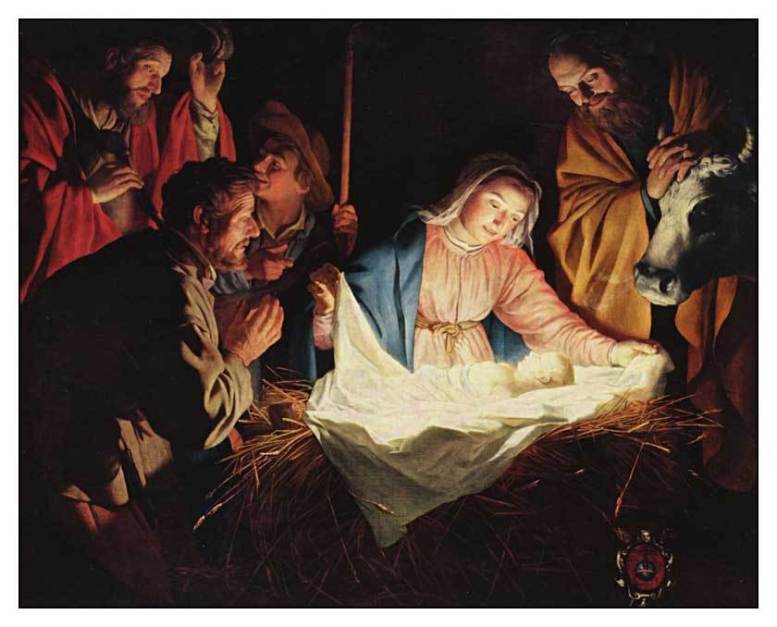A Pocket Knife, a Pen, and the Blood of a Dead Pope
A Pocket Knife, a Pen, and the Blood of a Dead Pope

 Every day when I come home from work, I empty my pockets and put the items from my pockets into the top drawer of my dresser. I have a separate place for my wallet, my keys, and my rosary. Next to where I keep my keys is a pocket knife that my dad gave to me. The pocket knife is important to me because it belonged to my grandfather, Tom Williams.
Every day when I come home from work, I empty my pockets and put the items from my pockets into the top drawer of my dresser. I have a separate place for my wallet, my keys, and my rosary. Next to where I keep my keys is a pocket knife that my dad gave to me. The pocket knife is important to me because it belonged to my grandfather, Tom Williams.
Whenever I open my drawer and see my grandfather’s knife, I’m reminded of all the occasions when we spent time together watching television, working on projects, and cleaning his laundromat.
In addition to the pocket knife, I also have a shiny, black fountain pen. Engraved in silver on the pen is the name of my other grandfather, Harry M. LaHood. My mom gave the pen to me when I was a boy. Because my mom’s dad died three days before I was born, I never had the opportunity to get to know him.
I think about both of my grandfathers on a regular basis and periodically reach out to them in prayer to ask for their help with challenges that I am facing.
I thought about the pocket knife and pen last week when one of my clients — I’ll call her Julie — made a comment to me: “I’m not Catholic, so I have no idea why Catholics would care about a vial that contains the blood of a dead pope. Can you explain to me why people would want to go look at a vial with blood in it?”
The look on Julie’s face gave away how she felt about people who would go out of their way to look at a vial of blood. She thought it was extremely bizarre that there are people who would make a special effort to pay homage to the blood of a dead person.
Julie was referring to a news report that she had seen that stated that a vial that contains the blood of Saint John Paul II was going to be on display at Saint Mary’s Cathedral in Peoria, on Saturday, August 19, 2017.
How would you respond to Julie’s question?
I was not aware of the vial or the fact that it was going to be on display at the Cathedral. Later that day, I did a Google search and found an article that stated that the vial, which is normally housed at the Saint John Paul II shrine in Washington, DC, had gone “on tour” to several Catholic Churches in the United States.
The first church that displayed the vial was in Boston, which was the first city in America that Pope John Paul II traveled to in 1979. After Boston, the vial was displayed in several other major cities, including New York and Philadelphia. This past week, the vial was displayed at churches in the Central Illinois cities of Manito, Bloomington, and Normal.
I told Julie that the blood of Saint John Paul II is what we Catholics call a “relic.” I explained to her that a relic is defined as a part of a deceased person’s body that is kept as an object of reverence, or an item from the past that has historical or sentimental value to one or more people.
I told her about how I value the pocket knife and pen that were once owned by my grandfathers. I also told her that we do not worship relics — we honor and venerate them for what they represent: the heroic virtue and faith of the holy saints that the relics were taken from.
I then explained that in the Catholic Church, there are three classes of relics. A first-class relic is a part of the body of a saint. It can be a strand of hair, a fingernail, part of a bone, blood, or any other part of the body. The locks of hair that a mother saves from her baby’s first haircut are first-class relics.
A second-class relic is an item that was owned, worn, or frequently used by a saint, such as a rosary, book, shirt, or chalice. My grandfathers’ pocket knife and pen are second class relics.
A third-class relic is an object that was touched by a saint or was touched to a first- or second-class relic. The most famous third-class relic is the Shroud of Turin, the cloth that our Savior was wrapped in before he was buried.
Although the concept of passing parts of a person’s body around for others to venerate is hard to grasp for non-Catholics, Julie understood what I was saying and was willing to keep her mind open to the significance of a relic. It’s easy to understand why people who did not grow up in the Catholic faith would find the veneration of relics to be an exercise in bizarre behavior.
Something that is worth considering is that the law that God imposed on each of us to “Honor thy father and thy mother” applies whether our parents are living or deceased. It also applies to our parents’ reputations and everything that was connected to them. We would be horrified if anyone were to intentionally damage our parents’ reputation or desecrate their bodies after their deaths. It makes sense that our reverence for a person does not cease to exist when the person dies. Our reverence for the person continues, regardless of whether the person is living or deceased.
Although a relic does not possess a power of its own, God can and does sometimes grant favors through a relic. Such favors honor His saints and reward the faith and humility of the person who has requested the favor.
We know from the New Testament that people were healed by simply touching the clothing of Jesus. Matthew 14:36; Mark 5:30. While these healings were directly related to Jesus, God can certainly grant favors to others through inanimate objects, even though the objects are not directly related to Jesus.
There is evidence in the Bible that God allowed miracles to occur by the touching of inanimate objects to the skin of people who were diseased: “God did extraordinary miracles through Paul, so that when the handkerchiefs or aprons that had touched his skin were brought to the sick, their diseases left them, and the evil spirits came out of them.” Acts 19:11-12.
Even in the Protestant version of the Bible, there is an incident where a dead man who was being buried in the sepulcher of the prophet Elisha came back to life the moment his body touched the bones of the prophet. 2 Kings 13:21.
The God who performed miracles through inanimate objects during the times of the prophets and our Lord is unchanging and eternal. There is ample evidence that He continues to touch the lives of others in miraculous ways through the relics of His saints.



2 Comments
Dear Georgette and Harry –
Relics are special to all of us who understand why we cherish them. At Carondelet, our Motherhouse, where I spent the first two and a half years learning about our Community, we possess, in our Chapel, a side altar that holds many relics of the Saints. These are First Class Relics – including the entire bodies of three young Saints who died for their Faith, and the FINGER of St. Elizabeth!
These are “Veiled” with short curtains, and they are opened on Special days during the year. We loved to pray in their presence while being in the Presence of God – in our Chapel. Blessings to you and your Family – with praayers and love – Sister Roberta
I am baffled by your sentence that begins: “Even in the Protestant version of the Bible…” you seem to suggest that Protestants do not include the Gospel of St. Matthew, as well as the rest of the New Testament, in their Bible. Those who were brought up in a Protestant Church but converted to Catholicism know better.